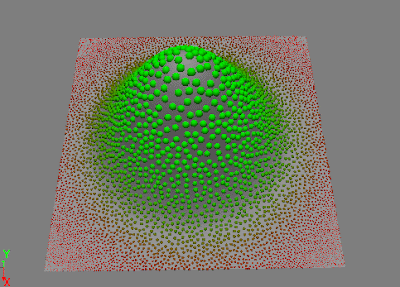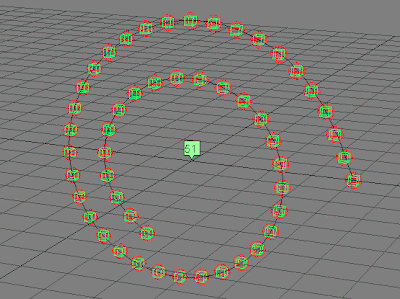
3rd July 2013: Please note: the latest, updated, version of Dart Throw is here.
I've just finished a new version of Dart Throwing with weight map control for spacing (spacing maps) and point deletion (erase maps). It uses it's own internal scheme for computing the barycentric weights from weight map values at vertices. Spacing maps allow you to modulate the density of the points using the weight map as an interpolant between the spacing radius and max spacing radius. Erase maps have a threshold parameter which lets you control at what point between 0 and 1 on the weight map the point should be deleted.
There's also a new 'Iteration Abort' parameter which specifies the number of tries (as a normalised percentage of the total iterations) the plugin should make before it aborts. This is for scenarios where you set a huge number of iterations but the number of successful darts becomes very low i.e. if you set 1,000,000 iterations and you only get an additional 1 dart added in the last 500,000 'tries' then you can see that aborting after 500,000 might be handy. The message window gets logged with the maximum number of iterations for a single try as a reference.
Changes in the way multiphase/element generator plugins work in the SDK mean that this version is only available for the very latest version of Autodesk Softimage - 2011 SP1. The Addon has been compiled for both 32 and 64bit Windows.
Download Dart Throw v002 Addon
A Vimeo clip is here.

